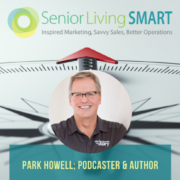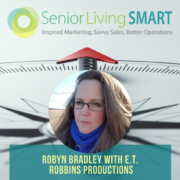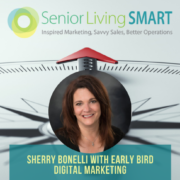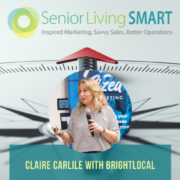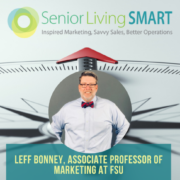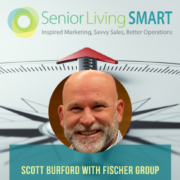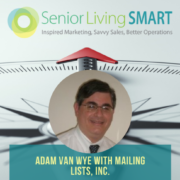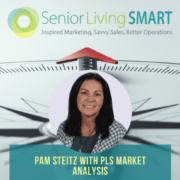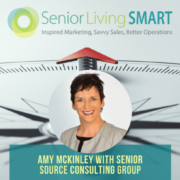Senior Living Marketing Perspectives: Marketing Through Storytelling
Topics Discussed and Key Points:
- Storytelling versus pitching
- Using the and/but/therefore framework to level up all of your communications
- Creating your ABT story
- Whether to have two separate messages—one for the adult child, one for the parent—when using the ABT framework
- Three rules of storytelling
- Addressing the COVID elephant in the room
Episode Summary:
In today’s episode, Debbie speaks with Park Howell, a storytelling strategist who helps marketers and content specialists grow their business using the power of the story. He is the host of the Business of Story podcast and the author of the 2020 book Brand Bewitchery: How to Wield the Story Cycle System to Craft Spellbinding Stories for Your Brand.
Today’s conversation explores how to sell more by saying less, and how to incorporate storytelling in your branding and marketing efforts in a way that is compelling to the audience you are speaking to. Stories allow us to experience what it is like to use a product or benefit from a service in a way that we would never be able to if we were simply “pitched” that product or service.
When communicating as a brand, instead of leading with logic, reason, data, and numbers, lead with a story. After all, every person, whether or not they want to admit it, buys with their heart and not their head. We only justify our purchases with our logical brain once the transaction has been made.
Park does a deep dive into the concept of and/but/therefore to maximize rapport and agreeableness between you (the salesperson) and the other person (your prospect or potential customer). and/but/therefore uses the three forces of story: agreement (Act 1), conflict (Act 2), solution (Act 3), respectively. This structure takes you out of the center of the story and in your place, the customer.
To use this effectively, you must understand what they want, what’s at stake for them in getting it, empathize with them in that they currently do not have it, and, finally, propose the solution to their problem.
“Your stories are not about what you make, but what you make happen in people’s lives.” Park goes on to explain how to become a compelling communicator using the power of repetition, addressing the elephant in the room, and crafting your ABT story today.
Resources Mentioned:
Business of Story
Brand Bewitchery
Transcript

